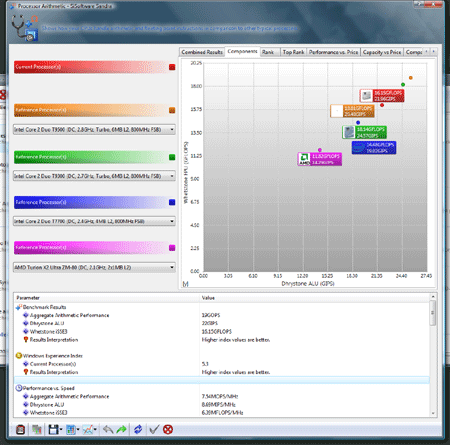Dell Studio XPS 16 Review
|
|
|
|
|
The latest version of Futuremark's synthetic 3D gaming benchmark, 3DMark Vantage, is specifically bound to Windows Vista-based systems because it uses some advanced visual technologies that are only available with DirectX  |

Click To Enlarge
|
We continued our testing with SiSoftware's SANDRA 2009, the System ANalyzer, Diagnostic and Reporting Assistant. We ran four of the built-in subsystem tests (CPU Arithmetic, Multimedia, Memory Bandwidth, Physical Disks). All of the scores reported below were taken with the processor running at its default clock speeds of 2.4GHz with 4GB of DDR3-800 RAM running in dual-channel mode.

CPU Arithmetic Test; Click To Enlarge

CPU Multimedia Test; Click To Enlarge

Memory Bandwidth Test; Click To Enlarge

Physical Disc Test; Click To Enlarge







